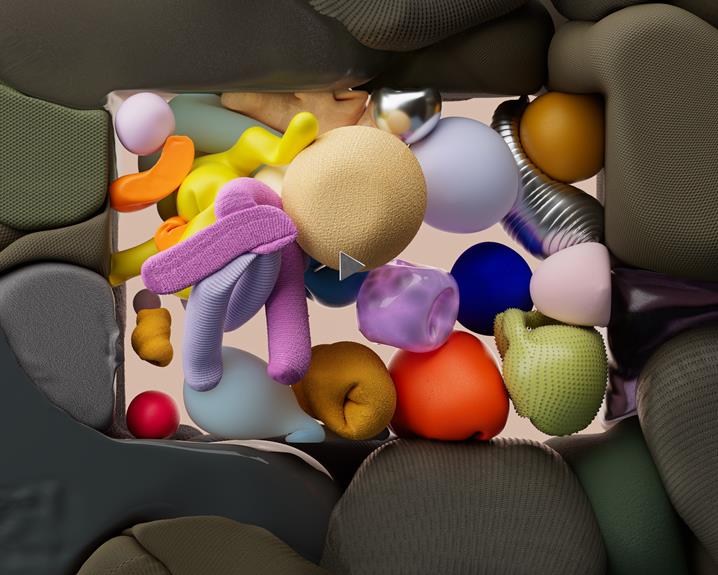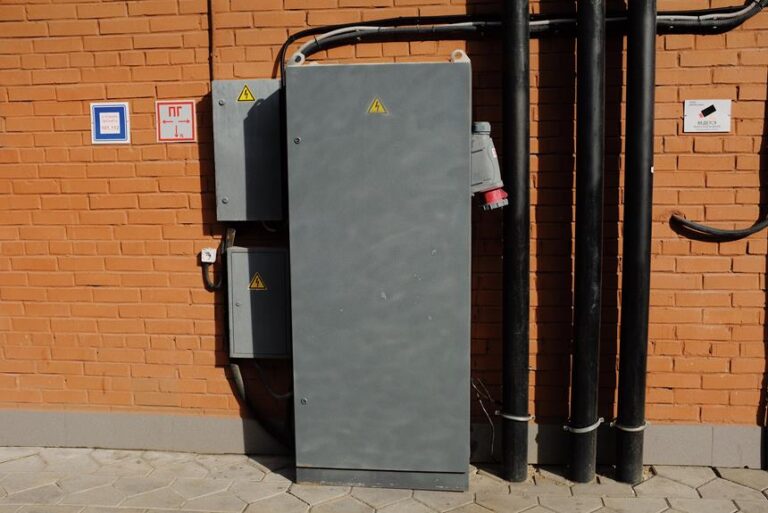Exploring Advanced Materials in 3D Printing: Innovations and Applications
As the field of 3D printing continues to advance, the exploration of advanced materials has become a key focus for researchers and innovators. This article delves into the latest innovations and applications of advanced materials in 3D printing, uncovering their versatility and potential across industries such as aerospace and medicine.
By unlocking new possibilities and enhancing productivity, these materials are poised to revolutionize the manufacturing landscape.
Join us as we delve into the future trends and implications of advanced materials in 3D printing.
Key Takeaways
- The evolution of advanced materials in 3D printing has revolutionized the field and expanded its capabilities.
- Advanced materials offer enhanced mechanical properties, improved chemical resistance, and thermal stability, making them suitable for various applications.
- Advanced materials in 3D printing have revolutionized industries such as aerospace, automotive, and healthcare, improving performance, reducing weight, and increasing fuel efficiency.
- Medical 3D printing materials contribute to advancements in bioprinting, tissue engineering, personalized medicine, and the fabrication of patient-specific implants and drug delivery systems.
The Evolution of Advanced Materials in 3D Printing
Over the past decade, significant advancements in 3D printing technology have led to the emergence of a wide range of advanced materials, revolutionizing the field and expanding its capabilities. The evolution of advanced materials in 3D printing has paved the way for groundbreaking applications in various industries, including bioprinting and tissue engineering, as well as sustainability through the use of recycled materials.
One of the most exciting developments in 3D printing is the ability to print with biocompatible materials for bioprinting and tissue engineering purposes. This allows for the creation of complex, functional structures that can mimic the properties of human tissues and organs. By using specialized bioinks, researchers can fabricate scaffolds that support cell growth and guide tissue regeneration, opening up new possibilities in the field of regenerative medicine.
Furthermore, the integration of sustainability principles into 3D printing has gained significant attention in recent years. With the growing concern over environmental impact, the use of recycled materials in 3D printing has become increasingly important. By utilizing recycled plastics or other materials, 3D printing can contribute to reducing waste and promoting a circular economy. This not only benefits the environment but also offers cost-effective solutions for industries looking to adopt more sustainable practices.
Cutting-Edge Innovations in 3D Printing Materials
Advancements in 3D printing technology have led to the emergence of cutting-edge innovations in materials, expanding the possibilities and applications of this transformative manufacturing process. These innovations have allowed for the production of materials with enhanced properties, such as increased strength, flexibility, and heat resistance, opening up new avenues for design and manufacturing.
One such innovation is the development of composite materials, which combine two or more materials to create a material with unique properties. For example, carbon fiber reinforced polymers have been used to create lightweight and strong parts for aerospace and automotive industries.
Another cutting-edge innovation is the use of bio-based materials, which are derived from renewable sources such as plants or bacteria. These materials not only reduce the environmental impact of 3D printing but also offer unique properties, such as biodegradability and biocompatibility.
Furthermore, there have been advancements in the field of multi-material 3D printing, enabling the fabrication of complex structures with varying properties in a single print. This allows for the creation of functional and customizable products, such as medical implants and wearable devices.
Overall, these cutting-edge innovations in 3D printing materials have revolutionized the manufacturing industry, providing designers and engineers with greater freedom and flexibility in their creations, while also addressing environmental concerns and improving product performance.
As we delve into the versatility of advanced materials in 3D printing, we will explore the range of applications and industries that have been transformed by these materials.
Exploring the Versatility of Advanced Materials in 3D Printing
Delving into the wide range of applications and industries, we can uncover the myriad ways in which advanced materials have revolutionized the field of 3D printing. The versatility of these materials has allowed for the creation of complex and intricate designs that were previously unimaginable. One of the key advantages of advanced materials in 3D printing is their ability to offer enhanced mechanical properties, such as increased strength and durability. This opens up new possibilities for industries such as aerospace, automotive, and healthcare, where robust and reliable parts are crucial.
Moreover, advanced materials in 3D printing also offer improved chemical resistance and thermal stability, making them suitable for applications in harsh environments. For example, the use of advanced materials in the production of chemical-resistant components can greatly benefit the chemical processing industry. Additionally, the ability to print with materials that have high thermal stability enables the creation of parts for industries such as electronics and energy, where heat resistance is paramount.
Furthermore, the versatility of advanced materials extends to the realm of bioprinting, where the development of biomaterials has enabled the fabrication of tissues and organs. These materials can mimic the properties of natural tissues, allowing for the creation of patient-specific implants and drug delivery systems. This has the potential to revolutionize personalized medicine and significantly improve patient outcomes.
Applications of Advanced Materials in the Aerospace Industry
One of the key advancements in 3D printing technology is the ability to utilize advanced materials in the aerospace industry. This has opened up new possibilities for the design and manufacturing of aircraft components, leading to improved performance, reduced weight, and increased fuel efficiency.
Advanced materials such as carbon fiber composites, titanium alloys, and nickel-based superalloys are now being used in the production of critical aerospace parts. Carbon fiber composites offer exceptional strength-to-weight ratio, making them ideal for applications where weight reduction is critical. By using 3D printing, complex geometries can be easily achieved, allowing for the production of lightweight, yet strong, components.
Titanium alloys are another advanced material widely used in aerospace, offering excellent corrosion resistance and high strength. 3D printing enables the fabrication of intricate titanium components with reduced waste and improved efficiency. Nickel-based superalloys are employed in high-temperature environments, such as jet engines, where they exhibit superior mechanical properties and resistance to thermal fatigue. With 3D printing, these alloys can be precisely engineered into complex shapes, improving performance and reducing production costs.
Advancements in Medical 3D Printing Materials
The advancements in medical 3D printing materials have opened up new possibilities in the field of healthcare. One such advancement is the development of bioresorbable implant materials, which can be used in surgical procedures and eventually dissolve within the body.
Another area of innovation is customizable tissue engineering, where 3D printing is used to create patient-specific tissues and organs.
However, these advancements also come with challenges, such as the sterilization of 3D printed medical devices, which require solutions to ensure safety and efficacy in clinical settings.
Bioresorbable Implant Materials
Several new advancements have been made in the field of medical 3D printing materials. Specifically, there have been significant developments in the area of bioresorbable implant materials.
Bioresorbable implant materials are substances that can be implanted into the body to support tissue regeneration. These materials eventually dissolve, eliminating the need for surgical removal.
The potential of bioresorbable implant materials to revolutionize the field of implantable devices has gained significant attention in the medical community.
One of the key benefits of bioresorbable implant materials is their ability to gradually degrade over time. This allows the body to naturally replace the implant with newly regenerated tissue. As a result, the risks associated with long-term implantation are eliminated, and the need for additional surgeries is reduced.
Furthermore, bioresorbable implant materials can be customized using 3D printing technology. This enables precise and patient-specific implant designs.
As a result, these materials offer a promising solution for a wide range of medical applications. These include orthopedics, cardiology, and tissue engineering.
The development of bioresorbable implant materials represents a significant advancement in medical 3D printing materials. It contributes to improved patient outcomes and quality of life.
Customizable Tissue Engineering
With recent advancements in medical 3D printing materials, the field of tissue engineering has seen significant progress in terms of customization and patient-specific designs. This has opened up new possibilities in the development of personalized implants and tissue replacements.
Here are four key advancements in customizable tissue engineering enabled by medical 3D printing materials:
- Patient-Specific Implants: 3D printing allows the creation of implants that are tailored to an individual's unique anatomy, improving the fit and reducing the risk of complications.
- Bioactive Scaffolds: Advanced materials can be used to fabricate bioactive scaffolds that mimic the structure and properties of natural tissues, promoting cell growth and tissue regeneration.
- Drug Delivery Systems: 3D printing can be used to create drug-loaded implants, enabling controlled release of therapeutic agents directly at the site of implantation.
- Organ-on-a-Chip: Combining 3D printing with microfluidic technology allows the creation of complex organ models, providing a platform for drug testing and disease modeling.
These advancements in customizable tissue engineering hold great promise for improving patient outcomes and revolutionizing the field of regenerative medicine.
Sterilization Challenges and Solutions
Overcoming sterilization challenges while advancing medical 3D printing materials requires careful consideration of material properties and innovative techniques. Sterilization is a critical step in ensuring the safety and efficacy of medical devices and implants produced through 3D printing. However, traditional sterilization methods, such as autoclaving or ethylene oxide gas sterilization, may not be suitable for all 3D printed materials due to their unique characteristics.
For example, some materials may be sensitive to high temperatures or chemicals used in sterilization processes. To address these challenges, researchers are developing new sterilization techniques specifically tailored for 3D printed materials. These include low-temperature sterilization methods like hydrogen peroxide gas plasma sterilization, which can effectively sterilize sensitive materials without causing damage.
Additionally, advancements in material science are focused on developing sterilizable 3D printing materials with inherent antimicrobial properties, reducing the need for separate sterilization processes. By addressing sterilization challenges, the field of medical 3D printing can continue to advance, offering innovative solutions for personalized healthcare.
Unlocking New Possibilities With Advanced Materials in 3D Printing
Innovative advancements in 3D printing technology have increasingly enabled the regular integration of advanced materials, revolutionizing the possibilities inherent in this field. With the ability to use a wide range of materials, 3D printing is no longer limited to plastics and metals. This expansion of materials has opened up new horizons for creativity, experimentation, and problem-solving.
Here are four ways advanced materials are unlocking new possibilities in 3D printing:
- Biocompatible Materials: Advanced materials such as biocompatible polymers and ceramics have paved the way for the development of custom-made medical devices, implants, and prosthetics that are tailored to individual patients' needs.
- Conductive Materials: The integration of conductive materials like graphene and carbon nanotubes has enabled the production of functional electronic components, such as sensors, antennas, and flexible circuits, directly through 3D printing.
- Composite Materials: By combining different materials, such as polymers with reinforcing fibers or metals with ceramics, composite materials offer enhanced mechanical properties, making them perfect for applications that require strength, durability, and lightweight design.
- Smart Materials: Incorporating shape memory alloys, self-healing polymers, or materials with unique optical properties into 3D printing allows for the creation of intelligent structures that can respond to external stimuli, self-repair, or exhibit customizable optical effects.
These advancements in advanced materials have the potential to revolutionize various industries, from healthcare and electronics to aerospace and automotive. As we explore the industrial applications of advanced materials in 3D printing, we will delve deeper into the transformative impact they are having on manufacturing processes and product designs.
Industrial Applications of Advanced Materials in 3D Printing
The utilization of advanced materials in 3D printing has brought about significant advancements in various industrial sectors. From aerospace to automotive, healthcare to electronics, the applications of advanced materials in 3D printing have revolutionized manufacturing processes and unlocked new possibilities.
In the aerospace industry, the ability to 3D print with advanced materials such as titanium alloys and carbon fiber composites has enabled the production of lightweight, yet strong components. This has led to improved fuel efficiency and reduced emissions in aircraft, while maintaining structural integrity and safety.
In the automotive sector, 3D printing with advanced materials like high-performance polymers and metal alloys has allowed for the rapid prototyping and production of complex parts. This has sped up the design and development process, resulting in faster time-to-market for new vehicles and increased customization options for consumers.
In the healthcare field, the use of advanced materials in 3D printing has revolutionized medical device manufacturing. Biocompatible materials, such as bioresorbable polymers, have enabled the production of patient-specific implants and prosthetics. This has improved patient outcomes and reduced the need for invasive surgeries.
In the electronics industry, the ability to 3D print with conductive materials has opened up new possibilities for the production of complex circuitry and electronic components. This has led to the development of smaller, lighter, and more efficient devices, such as wearable technology and flexible electronics.
Enhancing Productivity With Advanced Materials in 3D Printing
To further improve productivity, incorporating a wider range of materials and utilizing advanced techniques in 3D printing can significantly enhance manufacturing processes. Here are four ways in which advanced materials are enhancing productivity in 3D printing:
- Increased Speed: Advanced materials such as high-performance polymers and metal alloys allow for faster printing speeds without compromising on quality. These materials have improved flow properties and higher melting points, enabling faster deposition rates and reducing printing time.
- Improved Strength and Durability: Advanced materials can provide enhanced mechanical properties, including higher strength and durability. This allows for the production of parts that can withstand harsh environments and heavy loads, reducing the need for frequent replacements or repairs.
- Enhanced Functionality: With the use of advanced materials, 3D printed parts can now possess unique properties such as electrical conductivity, thermal resistance, and chemical inertness. This opens up new possibilities for creating complex components with integrated functionality, eliminating the need for additional assembly steps.
- Expanded Material Selection: The availability of advanced materials in 3D printing has expanded to include ceramics, composites, and biomaterials. This allows for the production of parts with tailored properties, enabling applications in industries such as aerospace, healthcare, and automotive.
Future Trends and Implications of Advanced Materials in 3D Printing
In the coming years, as the field of 3D printing continues to evolve, advanced materials will play an increasingly significant role in shaping the future of manufacturing. These materials offer a wide range of possibilities, enabling the creation of complex and customized products that were previously unimaginable.
One of the key future trends in advanced materials for 3D printing is the development of bio-compatible materials. These materials have the potential to revolutionize the medical industry by allowing the creation of patient-specific implants and prosthetics. Furthermore, the use of bio-compatible materials in 3D printing can also enable the production of drug delivery systems and tissue engineering scaffolds.
Another important trend is the incorporation of advanced materials with enhanced mechanical properties. For example, the use of carbon nanotubes and graphene in 3D printing can result in lightweight and strong components, making them ideal for aerospace and automotive applications.
Additionally, the development of functional materials, such as conductive and magnetic materials, opens up new possibilities for the creation of electronic devices and sensors through 3D printing.
The table below highlights some of the future trends and implications of advanced materials in 3D printing:
| Trend | Implications |
|---|---|
| Bio-compatible materials | Customized implants, prosthetics, drug delivery systems |
| Advanced materials with enhanced mechanical properties | Lightweight and strong components for aerospace and automotive applications |
| Functional materials | Creation of electronic devices and sensors |
Frequently Asked Questions
What Are the Limitations of Current Advanced Materials in 3D Printing?
The limitations of current advanced materials in 3D printing include limited material options, low strength and durability, difficulty in achieving complex geometries, and high cost. These constraints hinder the full potential of 3D printing technology in various industries.
How Do Advanced Materials Affect the Cost of 3D Printing?
The cost of 3D printing is influenced by the use of advanced materials. These materials often come with higher price tags due to their unique properties and manufacturing processes, impacting the overall cost of the printing process.
Are There Any Safety Concerns Associated With Using Advanced Materials in 3D Printing?
When considering the use of advanced materials in 3D printing, it is important to address any potential safety concerns. The adoption of such materials may introduce new risks that need to be identified, assessed, and mitigated to ensure the safety and well-being of users and the environment.
Can Advanced Materials Be Used in Consumer-Level 3D Printers?
Advanced materials can be used in consumer-level 3D printers, offering new possibilities for innovation and customization. However, careful consideration must be given to the capabilities and limitations of these printers to ensure successful and safe printing.
What Are the Environmental Implications of Using Advanced Materials in 3D Printing?
The utilization of advanced materials in 3D printing brings about various environmental implications. These include the need for efficient waste management systems, reduction of energy consumption, and the development of sustainable sourcing and recycling methods.
Conclusion
In conclusion, the advancements in advanced materials for 3D printing have unlocked a world of possibilities in various industries, such as aerospace and medicine.
The versatility and cutting-edge innovations in these materials have revolutionized the manufacturing process, enhancing productivity and expanding the range of applications.
As we continue to explore and push the boundaries of 3D printing, one must wonder: what new frontiers will advanced materials enable us to conquer next?









